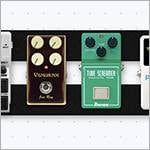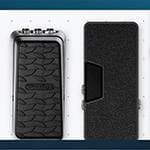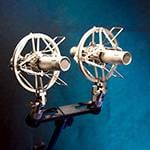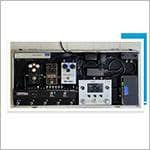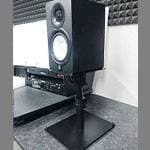
When recording an acoustic guitar, the ideal method is by solid mic’ing using a condenser microphone. The sound of an acoustic guitar passed through a mic naturally captures air vibrations and body resonance, resulting in a warm, deep sound. This method is standard in studio recording, but mic’ing an acoustic guitar at home is often quite difficult.
For example, you need a quiet environment. If external noise or everyday sounds bleed through, the sound quality drops instantly. Also, the cost of obtaining suitable microphones and an audio interface is not insignificant. Further, adjusting the mic position requires experience, and finding the optimal point takes time. Renting a studio can solve the environment issue, but it brings the hassle of cost and scheduling.
A more realistic option is line recording using an electro‑acoustic guitar equipped with a piezo pickup. You can record sound easily by connecting it directly to an audio interface, and it won’t be affected by external environmental noise. However, many people feel that the raw sound recorded via line is cold and inorganic or harsh and piercing to the ears. Because it lacks body resonance and air feel, it inevitably falls short of the natural acoustic guitar sound.
Therefore, in this article, using BOSS’s flagship multi‑effect GT‑1000, I will introduce a method to bring the line electro‑acoustic sound as close as possible to mic recording. Although the GT‑1000 is commonly associated with electric guitars, it can actually be an excellent tool for acoustic guitars as well. Whether for live performance, streaming, or home recording, this is a technique you can use in all situations, so please refer to it.
1. Using an Acoustic Preamp – Leveraging “AC RESONANCE”
First, use the acoustic‑guitar–dedicated preamp AC RESONANCE built into the GT‑1000. The signal from a piezo pickup picks up the string vibration quite directly, so it tends to lack a sense of live acoustic feel and often sounds stiff. By inserting AC RESONANCE here, you can supplement the body resonance and sympathetic vibration unique to acoustic guitars.
The GT‑1000’s AC RESONANCE offers several types, allowing you to choose a character such as STANDARD, BRIGHT, or WIDE.
- STANDARD: The most natural and all‑round usable choice.
- WIDE: A sound with breadth from low to high frequencies. Recommended for solo performance or ballads.
- BRIGHT: Suitable for cutting or strumming. Ideal when you want a brighter tone.
I prepared sound samples.
First, here is the raw piezo‑only tone.
Now, let’s put a preamp in. The settings are as follows.
TYPE ・・・ WIDE
RESONANCE ・・・ 45
TONE ・・・ -20
LEVEL ・・・ 60
At this point, the overly “line-in” feel has mostly disappeared, right?
However, it still lacks that truly natural, live acoustic vibe.
2. Use an Amp Simulator – Use a Cab Simulator to Add a Sense of Air
You might be wondering, “Why an amp simulator for an acoustic guitar?” However, the focus here isn’t the amp itself but the cabinet simulator you can use in conjunction. The TRANSPARENT amp type built into the GT‑1000 is a wide‑range model designed for acoustic guitars, allowing you to add cabinet effect without muddying the tone. Because the cab sim recreates the air vibrations you’d hear through a speaker, it brings a natural depth that you can’t get from direct line input.
Here’s how the sound with an amp simulator sounds.
Amp Settings
GAIN ・・・ 45
SAG ・・・ 0
RESONANCE ・・・ +10
LEVEL ・・・ 70
BASS ・・・ 50
MIDDLE ・・・ 50
TREBLE ・・・ 50
PRESENCE ・・・ 50
GAIN SW ・・・ MIDDLE
SOLO SW ・・・ OFF
3. Use a Compressor to Balance the Range – Try X-BASS COMP
One characteristic of piezo pickups is their wide frequency range. Because they pick up sound flatly from low to high frequencies, they can initially sound high-resolution, but left as-is, they may feel that it’s too much dynamic range in the performance or harsh attacks that are unpleasant to the ear.
This is where a compressor becomes useful. By lightly suppressing the attack and adjusting volume differences, you can create a more natural and listener-friendly sound. The GT-1000 offers several compressors, and surprisingly, the X-BASS COMP works well for acoustic guitar. As the name suggests, it’s a bass compressor, but since it tightly controls the low end while applying compression naturally, it can be used without losing the feel of the body of an acoustic guitar.
I recommend inserting the compressor before the preamp. This allows the following AC RESONANCE to receive a stable input and sound more natural.
Compressor Settings
THRESHOLD ・・・ 50
ATTACK ・・・ 75
LEVEL ・・・ 40
TONE ・・・ 0
RATIO ・・・ 3:1
Doesn't it feel like things are coming together nicely thanks in part to the compressor's character?
4. Add Reverb to Create a Sense of Space
Finally, by adding reverb, you can create an even more natural sense of air similar to mic recording. Reverb not only enhances the realism when listening to the guitar alone but it also helps the guitar blend well when mixed with an ensemble.
The GT-1000 offers a variety of reverb types, including room, hall, and plate, allowing you to choose according to the situation. For acoustic guitar, it’s standard to apply a light amount of ROOM or HALL reverb. If it’s too deep, the sound becomes muffled, so it’s best to keep the effect natural and subtle.
This time, I selected a reverb type called AMBIENCE.
This reverb simulates ambience microphones and creates a sense of spatial depth.
When recording, it’s wise to record dry without reverb and add it later in the DAW. Since reverb can be adjusted afterwards, it’s more flexible to match the vibe of the track during mixing. If using it live, consult with the PA engineer to balance the venue’s acoustics and the PA’s reverb.
TYPE ・・・ AMBIENCE
TIME ・・・ 1.0s
TONE ・・・ 0
DENSITY ・・・ 5
EFFECT LEVEL ・・・ 40
PRE-DELAY ・・・ 0ms
LOW CUT ・・・ 63.0Hz
HIGH CUT ・・・ 8.00kHz
LOW&HIGH DAMP ・・・ 0
All MOD&DUCK sections are 0
To Summarize
While line recording of electro-acoustic guitars is easy to do, the challenge is that the sound tends to lack liveliness as is. However, by utilizing the GT-1000, it is possible to create a sound approaching mic recording with the following four points:
- Correct body resonance with AC RESONANCE
- Add airiness with the TRANSPARENT amp + cab sim
- Use a compressor to shape the dynamic range and improve playability
- Create a sense of space with reverb
If you follow this process, whether recording at home or performing live, you can break away from the harsh direct piezo sound and deliver a comfortable acoustic sound to listeners.
The GT-1000 is known as a multi-effects unit for electric guitars, but by leveraging its potential for acoustic guitars, you will realize it’s a versatile tool that can handle a wide range of music scenes. If you’re dissatisfied with your electro-acoustic guitar’s line recording, please give the GT-1000 a try.
The “sound & person” column is made up of contributions from you.
For details about contributing, click here.





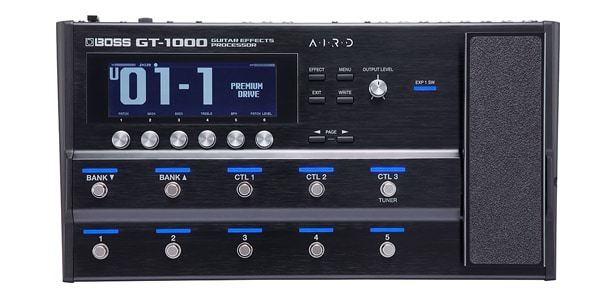


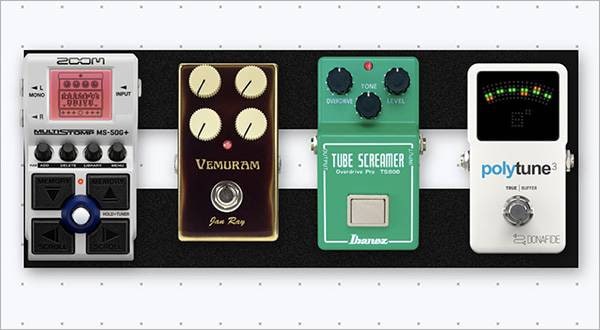
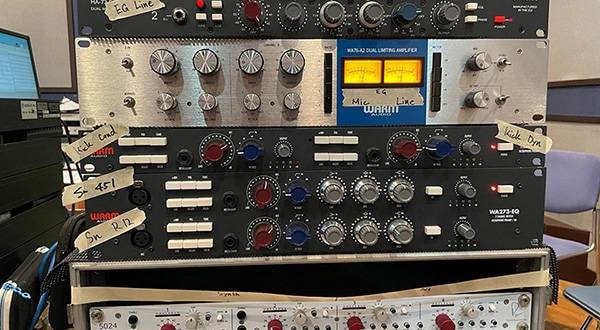
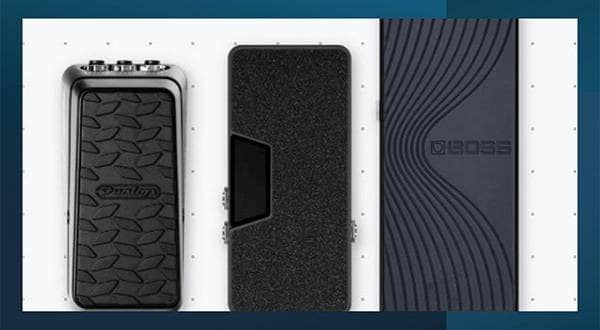
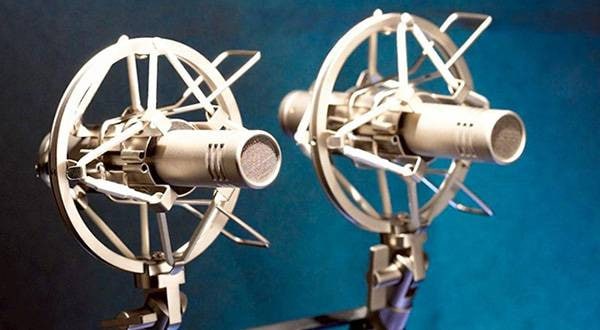




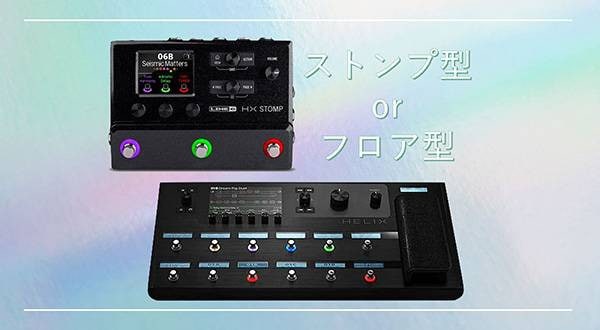

![[2025 Edition] Top 10 Recommended Acoustic Guitars](/contents/uploads/thumbs/2/2022/5/20220506_2_17799_1.jpg)
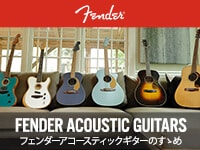 フェンダーアコースティックギターのすゝめ
フェンダーアコースティックギターのすゝめ
 はじめてのエフェクターは GT-1 にしよう
はじめてのエフェクターは GT-1 にしよう
 DR アコースティックギター弦
DR アコースティックギター弦
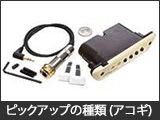 ピックアップの種類(アコースティックギター)
ピックアップの種類(アコースティックギター)
 エフェクターの種類
エフェクターの種類
 ギタースタートガイド
ギタースタートガイド
